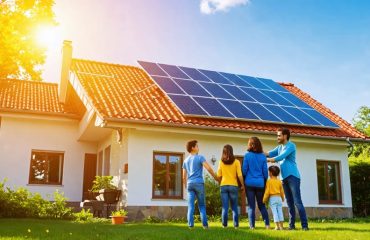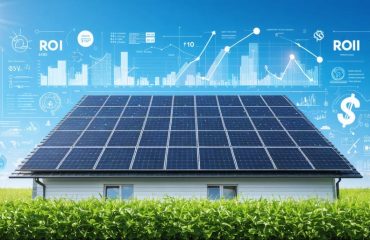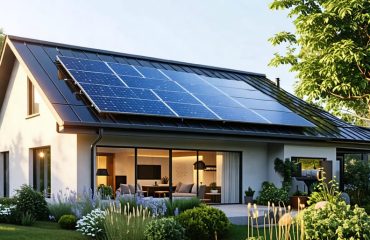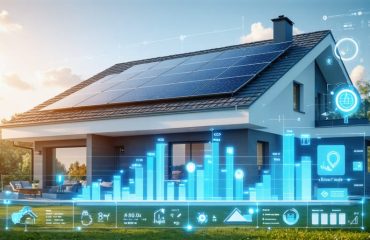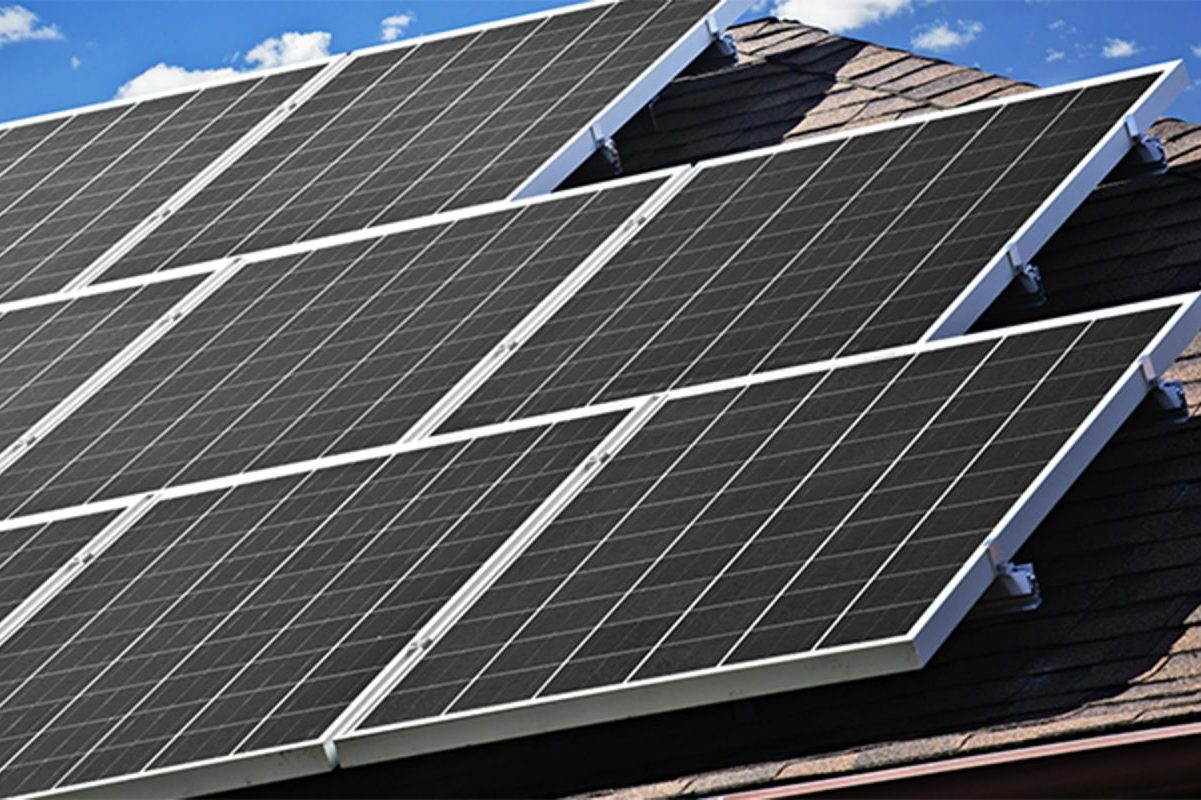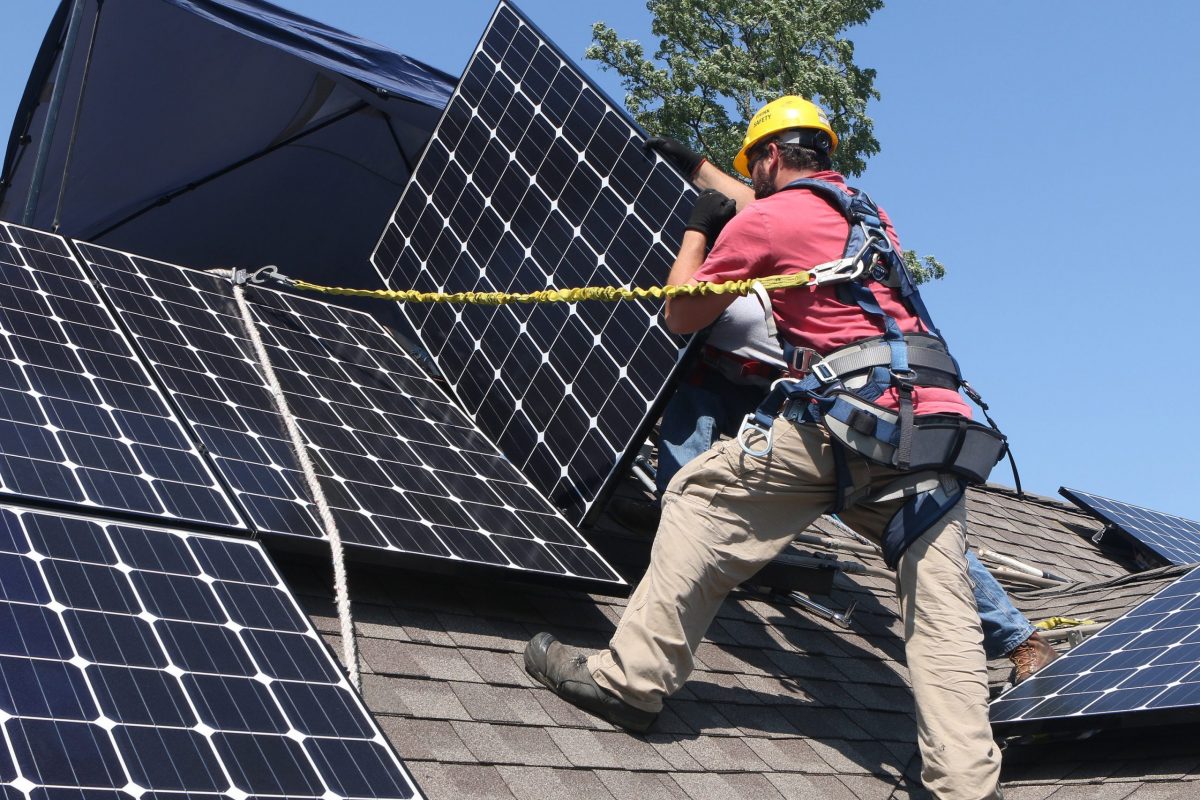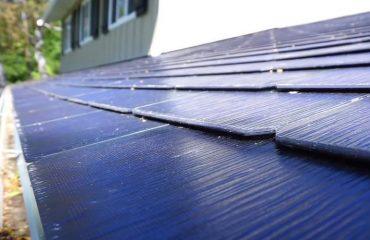Solar energy is no longer a luxury reserved for affluent homeowners. Through innovative low-income solar programs, millions of Americans now have access to clean, affordable energy solutions that can dramatically reduce monthly utility bills. Federal initiatives like the Solar for All program, combined with state-specific incentives and community solar projects, are making renewable energy accessible to households earning below 80% of their area’s median income. These programs typically cover 60-100% of installation costs and can save families an average of $900 annually on electricity expenses.
Recent expansions in solar assistance programs have eliminated traditional barriers like home ownership requirements and credit score minimums. Eligible participants can now choose between rooftop installations, community solar subscriptions, or solar lease arrangements – each designed to maximize savings while minimizing upfront costs. With flexible qualification criteria and streamlined application processes, transitioning to solar power has become a practical solution for families seeking long-term energy independence and financial stability.
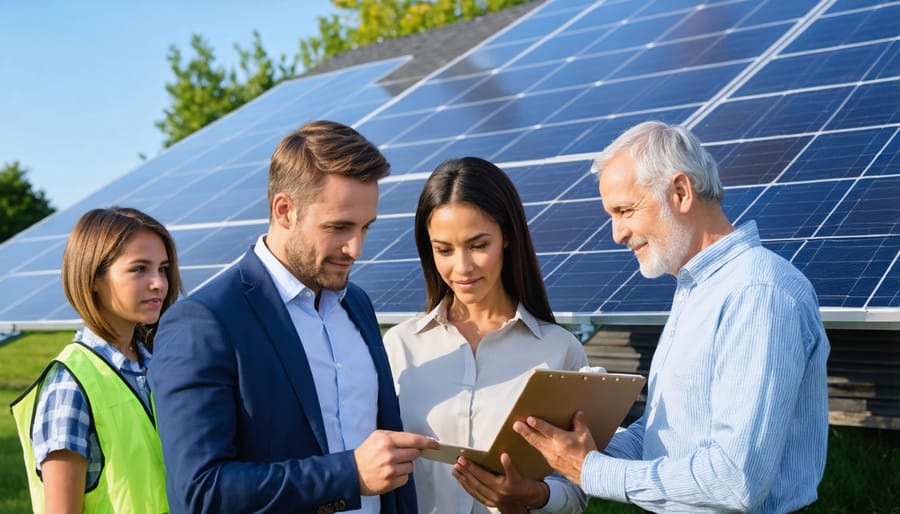
Federal Programs Making Solar Accessible
The Federal Solar Tax Credit
The federal solar tax credit, also known as the Investment Tax Credit (ITC), is one of the most significant solar tax incentives available to homeowners. Currently, this program allows you to deduct 30% of your total solar installation costs from your federal taxes, making solar energy significantly more affordable for low-income families.
What makes this credit particularly valuable is that it covers not just the panels themselves, but also installation costs, permits, and necessary equipment. If your tax liability is less than the credit amount in the first year, you can carry over the remaining credit to future tax years, ensuring you receive the full benefit.
For low-income households, this credit can be combined with other state and local incentives, maximizing the financial benefits. While the tax credit requires you to have tax liability to claim it, many communities offer assistance programs that help structure the benefit to work for families with limited tax obligations. The current 30% rate is guaranteed through 2032, giving families time to plan and save for their solar investment.
Federal Grant Programs
The federal government offers several grant programs to help make solar energy more accessible to low-income households. The Weatherization Assistance Program (WAP) is one of the most prominent, providing funding for both energy efficiency improvements and solar panel installations. This program specifically targets households at or below 200% of the federal poverty level.
The Low Income Home Energy Assistance Program (LIHEAP) offers another pathway to solar adoption, providing funds that can be used for energy-related home improvements, including solar installations. Additionally, the Rural Energy for America Program (REAP) supports renewable energy projects in rural communities, offering grants covering up to 25% of project costs.
The Solar Energy Technologies Office (SETO) frequently releases new funding opportunities specifically designed to increase solar access in underserved communities. These programs often work in conjunction with state and local initiatives to maximize benefits for qualifying households.
To access these programs, households typically need to apply through their state’s energy office or local community action agencies. Documentation of income and residence is usually required, and approval times vary by program and location.
State-Specific Solar Assistance Programs
Income-Based Solar Incentives
Many states offer specialized solar incentive programs designed specifically for low-income households, making solar power more accessible than ever. California’s SASH (Single-family Affordable Solar Homes) program provides significant upfront rebates that can cover up to 80% of solar installation costs. Similarly, Illinois’s Solar for All initiative offers substantial savings through their distributed generation program, reducing or eliminating upfront costs for qualifying households.
Massachusetts residents can benefit from the Solar Massachusetts Renewable Target (SMART) program, which provides additional incentives for low-income participants. In New York, the Affordable Solar program doubles the standard NY-Sun incentive for households earning less than 80% of the area’s median income.
Colorado’s Energy Office manages a weatherization assistance program that includes solar PV installations for eligible families. Washington state offers grants and enhanced incentives through their Low-Income Community Solar Deployment program, allowing participants to benefit from solar energy even without installing panels on their own homes.
These programs typically require proof of income and residency, but the application process is designed to be straightforward and user-friendly. Local utilities and solar installers often help guide applicants through the qualification process.
Community Solar Projects
Community solar projects offer an innovative solution for low-income residents who want to benefit from solar energy without installing panels on their own homes. These shared solar facilities allow multiple households to subscribe to a portion of a larger solar array, typically located within their utility service area.
Participants receive credits on their monthly electricity bills based on their share of the solar project’s output. This arrangement eliminates the need for upfront installation costs and home ownership, making solar energy accessible to renters and those living in multi-family buildings.
Many states have implemented specific provisions requiring community solar projects to reserve a portion of their capacity for low-income subscribers. These programs often include additional incentives such as guaranteed savings, reduced subscription fees, and flexible payment terms.
For example, some projects offer income-based discounts of 20-50% on monthly solar subscriptions, while others eliminate credit score requirements and long-term contracts that typically create barriers for low-income participants. Local organizations and utilities frequently partner to provide education and enrollment assistance, ensuring eligible residents can easily participate in these beneficial programs.
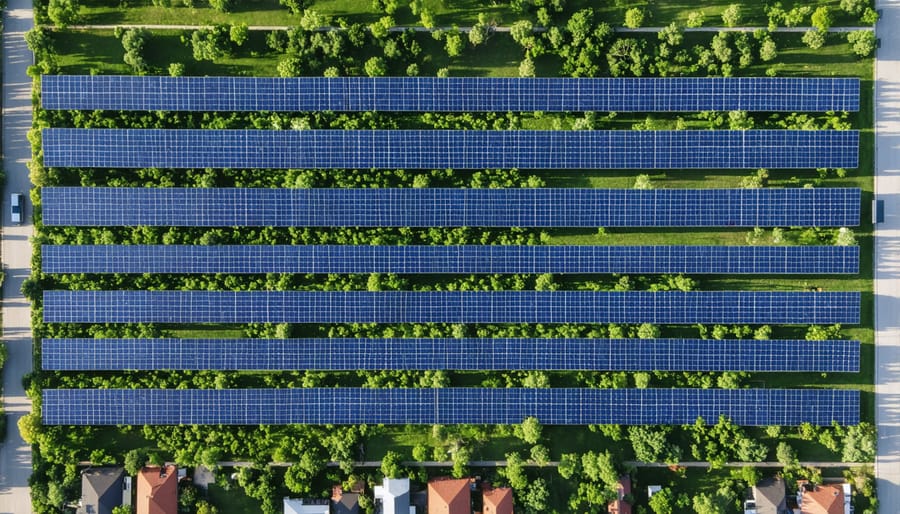
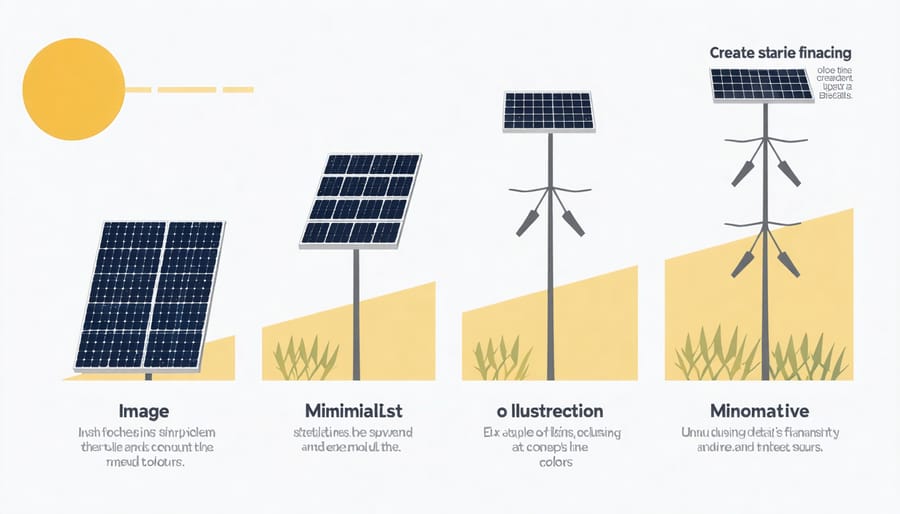
Special Financing Options
Solar Leases and PPAs
For homeowners who want to go solar without a significant upfront investment, solar leases and Power Purchase Agreements (PPAs) offer attractive no-money-down options. These financing solutions make solar energy accessible to families who might otherwise find the initial costs prohibitive. Understanding the differences between leasing versus buying solar panels is crucial for making an informed decision.
With a solar lease, you essentially rent the solar system, paying a fixed monthly fee to use the equipment. The leasing company maintains ownership of the panels and handles all maintenance and repairs. This arrangement typically includes performance guarantees, ensuring your system produces the promised amount of electricity.
PPAs work similarly, but instead of paying for the equipment rental, you purchase the power generated by the solar panels at a predetermined rate that’s usually lower than utility prices. This rate may increase slightly each year, but it’s generally structured to remain below market electricity prices.
Both options eliminate the need for upfront capital while providing immediate savings on energy bills. The savings might be more modest compared to purchasing panels outright, but these programs make solar accessible to families who wouldn’t otherwise be able to afford it. Many leasing companies also handle paperwork for incentives and rebates, making the process hassle-free for homeowners.
Low-Interest Solar Loans
Low-interest solar loans offer an affordable pathway to solar energy for households with limited financial resources. These specialized financing options typically feature lower interest rates, flexible repayment terms, and reduced credit score requirements compared to traditional loans.
Many states and local governments partner with credit unions and community development financial institutions (CDFIs) to provide these accessible loan programs. Interest rates usually range from 3% to 6%, significantly lower than personal loans or credit cards. Repayment terms can extend from 10 to 20 years, keeping monthly payments manageable for budget-conscious families.
What makes these loans particularly attractive is their inclusive qualification criteria. While traditional lenders might require credit scores above 700, solar loan programs often accept scores as low as 580. Some programs also consider alternative credit data, such as utility bill payment history, making them more accessible to families with limited credit history.
Many of these loans come with additional perks, such as:
– No prepayment penalties
– Reduced or waived origination fees
– Deferred payment options during installation
– Combined energy efficiency upgrade financing
To find these programs, start by contacting your state’s energy office or local utility company. Housing assistance organizations and solar installers can also connect you with suitable financing options. Remember that combining these loans with available solar incentives and tax credits can further reduce your overall costs.
How to Get Started
Getting started with low-income solar programs is simpler than you might think. Follow these steps to begin your journey toward affordable solar energy:
1. Check Your Eligibility
First, determine if you qualify based on your household income. Most programs use the Federal Poverty Level (FPL) or Area Median Income (AMI) as benchmarks. Generally, households earning 80% or less of the AMI may qualify for assistance.
2. Gather Required Documentation
Prepare these essential documents:
– Proof of income (tax returns, pay stubs)
– Recent utility bills
– Property ownership documents or lease agreement
– Valid government-issued ID
– Social Security numbers for household members
3. Research Available Programs
Look into these options:
– Federal initiatives like the Weatherization Assistance Program
– State-specific free solar panel programs
– Local utility company incentives
– Non-profit solar initiatives
4. Contact Program Administrators
Reach out to program administrators directly or visit their websites to start your application. Many organizations offer assistance with the application process.
5. Schedule a Home Assessment
Most programs require a home evaluation to ensure your property is suitable for solar installation. This assessment typically includes:
– Roof condition check
– Solar potential analysis
– Electrical system evaluation
6. Review and Accept Program Terms
Carefully review all program requirements, benefits, and obligations before proceeding. Consider consulting with a housing counselor or financial advisor if needed.
Remember, while the process may take several weeks to complete, the long-term benefits of reduced energy costs make it worthwhile. Don’t hesitate to ask questions throughout the process – program administrators are there to help you succeed.
Solar energy is no longer a luxury reserved for high-income households. With numerous federal, state, and local programs available, low-income families can now access clean, renewable energy while significantly reducing their utility bills. Whether through direct installation assistance, generous tax incentives, or innovative financing options, there’s likely a program that fits your situation. Take the first step today by researching available programs in your area or contacting local solar installers who specialize in low-income installations. The transition to solar power not only benefits your household financially but also contributes to a cleaner, more sustainable future for all. Don’t let financial constraints hold you back – explore these opportunities and join the growing community of solar-powered homes across America.


